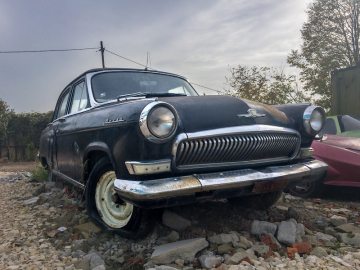One of the lesser talked about iOS 10 features has to do with the many APIs that were introduced alongside Apple’s latest software update earlier this year, which enable 3rd party app developers to take advantage of the many new features ushered in by iOS 10 — one of the most interesting of which allows users to snap photos in Adobe’s native RAW file format.
What exactly is RAW format, you ask? In a nutshell, images captured in RAW format are uncompressed, DNG (Adobe’s Digital Native format) files, which are essentially unhindered, easily editable variants of the standard, more compressed JPEG format, according to PhoneArena. In other words, an image captured “in the RAW” allows photographers to more easily edit the photo, since the various elements of it are more pronounced, displaying impeccable attention to detail for more precise edits. If your iOS 10-running iPhone is powered by Apple’s A8 SoC (or newer) — which includes iPhone 6/6 Plus, 6s/6s Plus, 7/7 Plus and SE — then you’re able to take advantage of this feature.
RAW images are often preferred by professional photographers, and are a paramount feature of most DSLR cameras on the market. However, while iOS 10 ushered in the ability to capture RAW images, the only downside to the format — particularly as it pertains to Apple’s iPhone — is that they cannot be captured using the standard iOS 10 camera app. And therefore, you’d need to download a 3rd party camera app, such as Adobe Photoshop Lightroom for iOS.
Why capture RAW images? What’s the advantage? According to PhoneArena, since RAW images are uncompressed, native files, they inherently display more vivid detail — and, not only that, but they can more easily be exported to either PNG or JPEG format without compromising additional detail.
“RAW files usually have a bit depth of 12, 14, or 16 bits compared with the measly 8-bit depth of a run-of-the-mill JPEG file,” according to PhoneArena. “This means that RAW files retain a much larger amount of different brightness levels that you can edit without compromising the overall image quality. An 8-bit JPEG image gives you 256 levels to play around with, while a 12-bit RAW gets you 4096. This lets you fine tune the shadows and the highlights and correctly expose your photo.”
RAW photos, therefore, allow for more precise correction, simply given the greater (or lesser) extent of exposure represented in them, which is largely dependent on the setting in which the photo was captured. One could always argue that a JPEG image can just as easily be edited after the fact; however, images captured in JPEG format are a bit more difficult to fine-tune precisely.
Be sure to check out the image comparisons below to see what we’re talking about. You’ll likely notice the RAW images appear more vivid and vibrant than their JPEG counterparts.




Did you know you could capture images in the RAW with your iPhone 6 or newer?
Let us know in the comments below!
Images: PhoneArena & Ksenija Toyechkina / Shutterstock.com
Want a FREE iPhone 7? Click here to enter our monthly contest for a chance!
Follow us on Apple News by pressing the (+) button at the top of our channel

from https://www.idropnews.com/2016/11/09/heres-why-photographers-are-crazy-for-raw-images-and-how-you-can-shoot-them-on-iphone/
via IFTTT
No comments:
Post a Comment
Note: Only a member of this blog may post a comment.